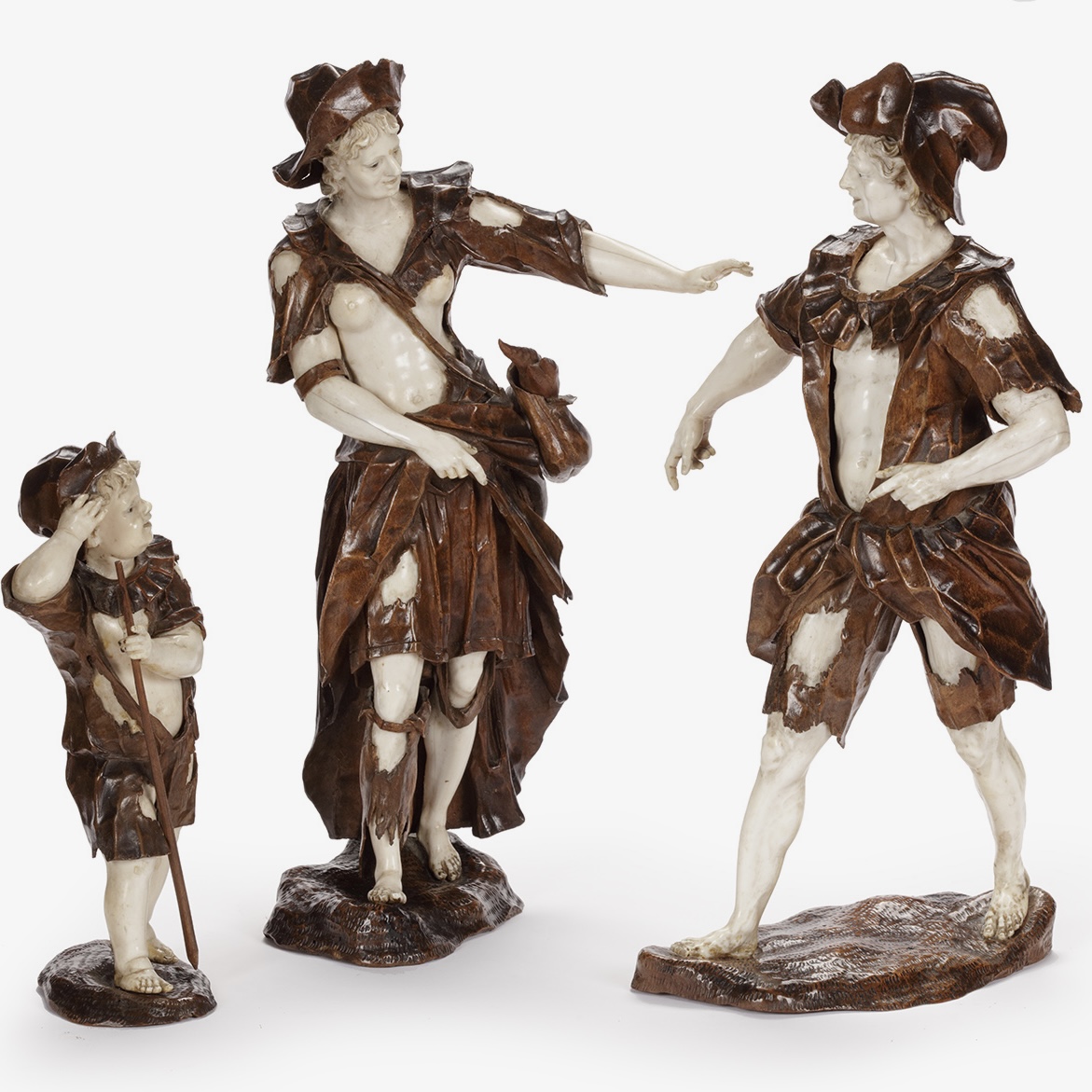- Material:
- Ivory, pearwood, glass
- Origin:
- Germany
- Date:
- ca. 1740
- Master:
- Matthias Kolb
Price on request
Beggars, vagrants, and vagabonds have long held popular appeal and are frequently depicted on paintings, drawings and sculptures. These three beggar figures of a man, woman and child, form a captivating whole. The figures are skillfully carved from ivory and draped with pearwood clothes, while their glass eyes make the figures come alive with expression.
Often these ivory and wood figures are attributed to Simon Troger and are sometimes even referred to as ‘Troger figures’. However, Troger had quite some followers and different artist who worked with the same media were active during the same period. One of these artist active in Augsburg during the 18th century was Matthias Kolb.
Based on different characteristic of this work it is likely that the figures were made by Kolb. Troger tended to use tropical woods for his sculptures, however pearwood was used for the present figures. Troger’s figures also usually wear less clothes than we can see here, while Kolb’s figures are known for wearing big mantles and hats. The irregular and stippled wooden base on which the figures are placed are also a typical feature of Kolb’s work, which we don’t see in figures by Troger. Lastly, Kolb tended to apply dark colored lacquer to the wood of his sculptures, in the deeper laid surface we can still some of the remains of this lacquer in the present sculptures. A complete set of three figures in this condition is extremely rare to find. Especially in the oeuvre of Kolb, who produced significantly less than Troger.
Typically these figures would be part of a ‘Kunstkammer’ collection. These kinds of collections are characterized by the artistic use of natural materials. The fascination with the creations of nature and its artistic possibilities is a timeless one, which has fascinated many in the past and will continue to do so in the future.




